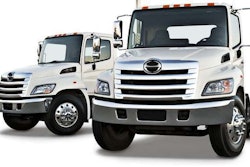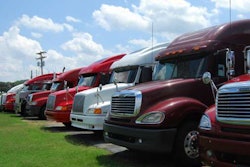Freight Wing president Sean Graham recently fielded questions concerning the January 1, 2013 CARB compliance deadline in California:
January 1st Marks a New Law in California Concerning Trailers, What’s Up?
Really big news and we hope fleets and owner operators are prepared should they operate or move freight into California. CARB laws come into play that require 53-foot van and certain age reefer trailers to have SmartWay-verified aerodynamic devices installed. Those devices are side skirts, gap fairings and boat tail fairings that improve fuel economy 4 to 5 percent on their trailers. By the way, tires also come into play for 2010 and older box trailers, but not until January 2017. That’s when SmartWay-verified tires will be required.
Will CARB Offer Warnings or Will it Begin Fining?
We were curious too and asked that. We chatted with Randy Rhondeau who knows about enforcement for CARB, and he said “ignorance is not bliss.” And, it could be a double whammy when it comes to fines. The owner of the trailer could be cited $1,000 per day. And, what’s more, the driver of the tractor/trailer could also be fined $1,000 a day. Those who thumb their nose at the new law could see fines increase to $10,000 per day for what Randy called “egregious, repeat offenders.”
What’s the ROI on Side Skirts?
Even without the CARB mandate, trailer aerodynamics really make sense. Most of our customers want the skirts even without the need for compliance and that’s because many have documented real-world fuel savings of up to 4 percent with our skirts. In testing, at sustained speeds, our SAE results have shown up to a 7 percent improvement. If you do the math, our skirts can have a payback in as little as 35,000 miles of trailer utilization. It’s one of the fastest paybacks in the trucking industry.
A Push to Meet Deadline?
Most fleets, especially those in California, are ready to roll – or are gearing up now. Others may have phase-in plans with CARB, which takes some of the sting out of meeting full compliance by Jan. 1.
For other fleets, especially those outside of California, we’ve been fielding a lot of calls asking about what’s needed; and we’re working with fleets and owner operators getting them set up with skirts. One thing we recommend to all those needing trailer side skirts is to do your homework. There are several on the market, but don’t just go out and purchase any model so you’ll be compliant. Research what is best for your operation. Durability continues to be the number one issue for fleets – you don’t want to learn the hard way and repurchase side skirts again in a year.
Materials differ greatly as does bracketing. We’ve been in this business a long time – one of the first in fact – and we’ve tried and tested various materials including aluminum and fiberglass. Ultimately we determined industrial grade plastic, along with a flexible brace system, connecting the skirt to the trailer, is best since it allows the skirt to bounce back to its original shape after an impact. This combination lets the skirts take side and frontal hits – such as going up or down a loading dock — without damage.
Installation Help
For fleets behind the eight-ball and needing numerous trailers outfitted before the deadline, we’ve put together mobile installation teams to help customers with fitments. It’s a great service to fleets that don’t have the manpower to self install. For the do-it-your-selfer, it takes four to five hours to install. But, like with anything, the more you do it, the faster they can be mounted and our teams can efficiently help fleets with the process.











